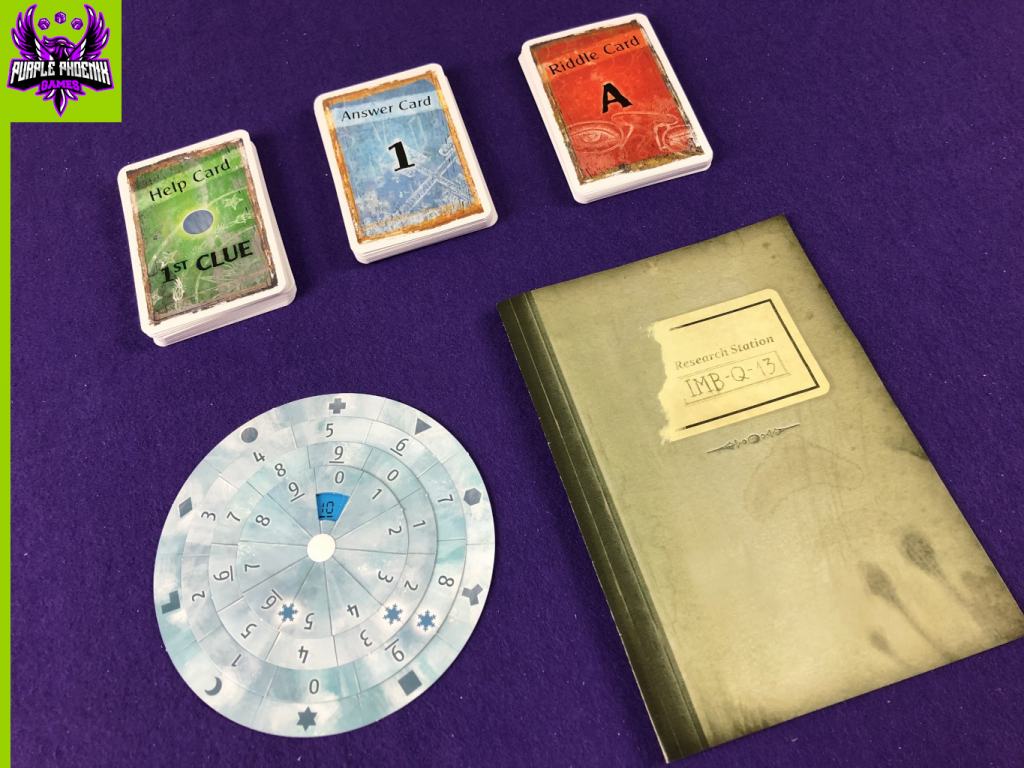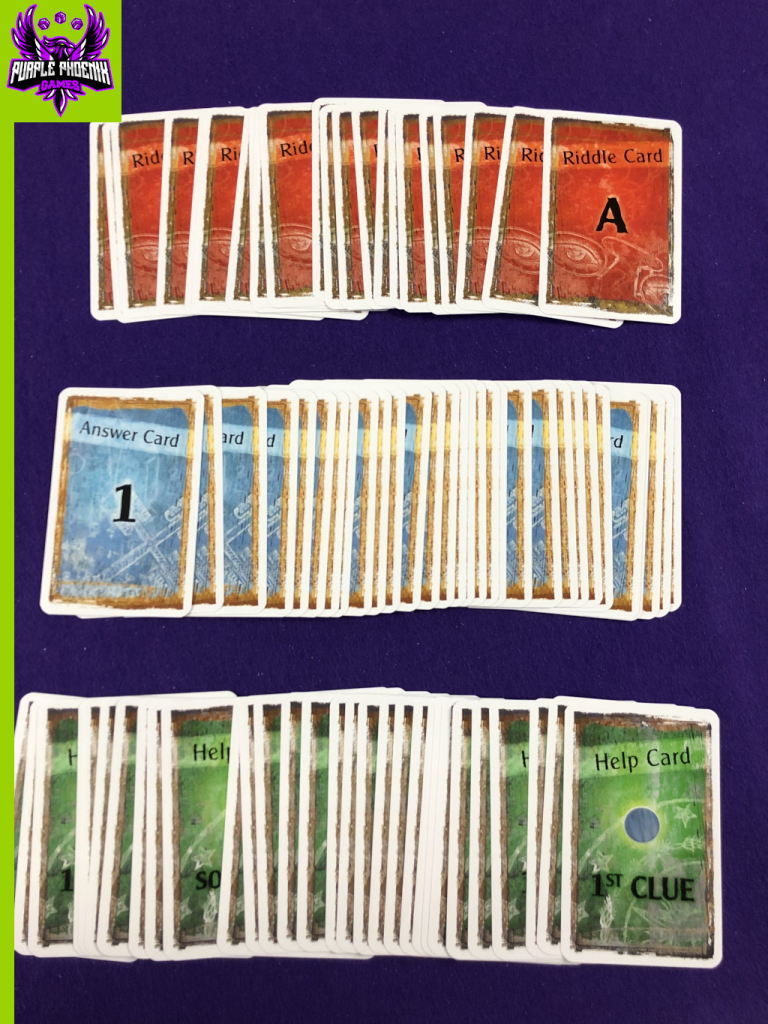
One thing that has grown in popularity over the recent years are Escape Rooms. You know, where you’re physically trapped inside a room and have to solve various puzzles, crack codes, and beat the clock in an effort to get out before it’s game over. It should come as no surprise that this premise has made its way into the world of board gaming. Yeah, you’re not physically trapped somewhere, but you still have tons of puzzles to sort out in the fastest time you can. So how does this EXIT game hold up when compared with a real-life escape room? Keep reading to find out!
| EXIT: The Game – The Polar Station (2017) | Kosmos |
| 1-4 players | 45-90 minutes |
| Ages 12+ | BGG Weight – 2.74 / 5 |
Disclaimer: In order to avoid spoilers, I will not be going too in depth with this review, but rather provide a general overview of the type of gameplay involved. Also, this review covers one specific EXIT game, but the general mechanics and gameplay are the same across the entire EXIT family.
In EXIT: The Game – The Polar Station (simply referred to as just EXIT from hereon out), you are a member of a research team stationed in the Arctic. One morning, the evacuation alarm goes off unexpectedly, and everyone makes a break for the helicopters. Just one problem for your crew – your exit door is already locked and sealed! You make your way to another section of the lab to look for an alternate escape route. What you find is a room full of locked drawers/doors. You must quickly crack these codes, in hopes that the materials contained within will aid you in your attempts to escape before the final rescue helicopter takes off.
To setup for a game, sort the cards into their appropriate decks – Riddle cards, Answer cards, and Help cards. Place the Decoder disk and the Book in the center of the table. Leave the other items in the game box, to be introduced later in the gameplay. You will also most likely need a pen/pencil and paper to help you as you solve the riddles. And bam! You’re ready to start. You may then open the Book and begin the game. The game ends if or when players are able to successfully solve all of the riddles/puzzles and make their escape from the polar station.
Without spoilers, that’s basically as much detail as I can provide. Over the course of the gameplay, players will be using the pages of the Book to find clues, solve puzzles, or even identify secret symbols. Riddle cards will be drawn and used as ciphers, puzzles, or clues to help crack a code. When you think you have the correct 3-digit code for a specific Riddle Card, enter the code onto the Decoder disk. The disk will then provide the number of an Answer card, which you will draw and check to see if you were correct or incorrect. If your answer is incorrect, you simply keep trying to solve the Riddle card. If your answer is correct, you will then be instructed to draw other Riddle Cards, or the other items from the game box, and will continue with these new puzzles. If at any point in time you feel stuck, you may draw a Help card for the corresponding puzzle. The first and second Help cards will give you hints, and the final Help card will tell you the solution to the puzzle. Draw these sparingly if you can, as they affect your end-game score!
When all puzzles/riddles/codes have been completed and cracked, the game is over. Players will then check the rulebook to see how many Stars were earned, out of 10. The number of Help cards you use, as well as how much time you took to complete the game, will affect the overall score.

All in all, I think that EXIT is a unique game. The games of the series have varying difficulty levels, and this particular EXIT is rated a 3 out of 5. So this one isn’t the most difficult game in the bunch, but it wasn’t easy either! All of the puzzles require creative solutions, and the answers are rarely ever as straight-forward as they appear. Some puzzles are more logical than others, while some require you to physically manipulate components to be used in creative ways. I guess that’s as good a segue as any to get into components. This game consists of a deck of cards, a Decoder disk, a Book, and a couple of special ‘items.’ All decent quality overall. But here’s the thing – you will have to bend/cut/manipulate/destroy many of the components to help you in your mission to solve the riddles. So this game is literally a one-and-done. It cannot be played again.
Did I enjoy my play of this EXIT game? Yes. It was uniquely challenging, while forcing me to think creatively when addressing the different riddles. The method used to solve one riddle is not necessarily the same to solve the next, so you have be able to adjust on the fly. And often times you will have several riddles in play at once, so you have to decide which to address and when, when do you have the right information, which riddle it goes with, etc.
The biggest drawback for me is that it cannot be played again, The fact that you have to alter the components to a point of destroying the original card is something that was personally hard for me to get used to. I try to keep all my games so nice and pristine, that having to cut a card apart was tough! I got over it though. Having played a couple of the EXIT games, as well as a few of the Unlock! games, I would have to say I prefer the Unlock! system. The puzzles are just as challenging and creative, but you do not need to alter components to complete the game. That way, I can pass along an Unlock! game to a friend, as opposed to just tossing this EXIT game right in the recycling bin. I might pick up another EXIT game if I had a specific group/game night in mind, but in general I don’t think I’ll be grabbing any more of these, for the lack of replayability alone. The gameplay itself is pretty great, but the fact that I can’t play it again is a con I can’t ignore. Purple Phoenix Games gives this one a chilling 4 / 6.

